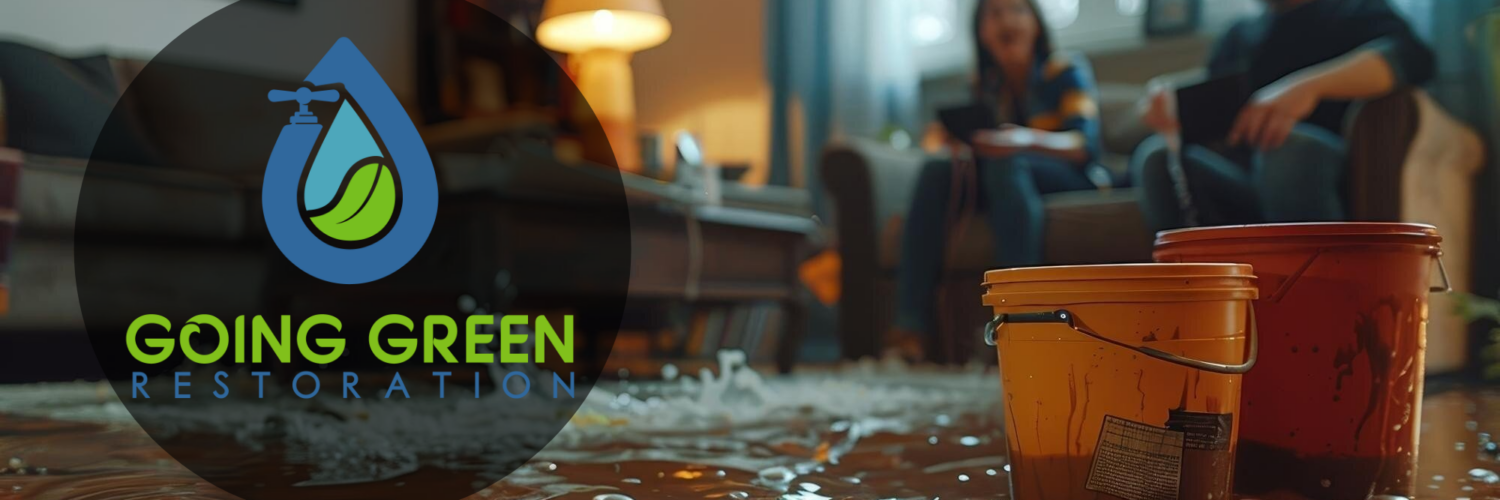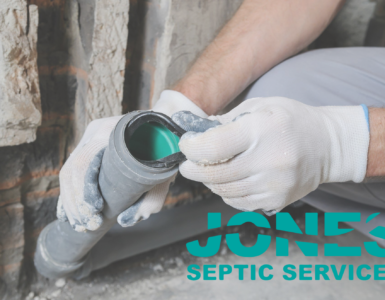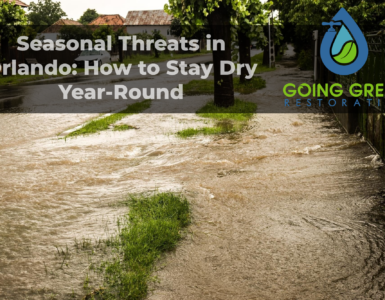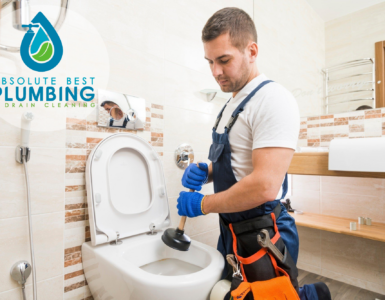Florida’s tropical climate, seasonal storms, and humid environment make water damage one of the most pressing threats for property owners. The state’s location along hurricane-prone coastlines exposes it to intense rainfall, flooding, and storm surges, while its high year-round humidity increases the risk of mold and structural deterioration. In 2025, these risks are expected to intensify due to shifting weather patterns, increased coastal development, and aging infrastructure that struggles to keep up with population growth and environmental stress. Experts warn that heavier rain events, combined with outdated drainage systems, could lead to more frequent and severe flooding episodes in urban and suburban communities.
For homeowners and businesses in Orlando, being prepared is not just smart, it’s essential. The combination of unpredictable tropical weather, proximity to major water bodies, and high groundwater levels means that even a seemingly minor leak or roof failure can escalate into a major restoration project if not addressed quickly. Water damage can devastate property, compromise electrical systems, weaken foundations, and lead to costly repairs that may not always be fully covered by insurance. In addition, prolonged moisture exposure can create hazardous living conditions by encouraging the growth of mold, mildew, and bacteria, which pose serious health risks.
This article examines the leading causes of water damage in Florida this year, including hurricane-related flooding, plumbing failures, roof leaks, and sewer backups. It also explains how certified professionals, like those at Orlando Water Damage Restoration companies, can help protect both property and peace of mind. By combining rapid response, advanced drying technology, and preventative maintenance strategies, these experts not only restore homes and businesses after disaster strikes but also help property owners reduce the risk of future damage.
The Growing Threat of Extreme Weather
Climate experts warn that Florida is experiencing more frequent and intense rainfall events, driven by warming ocean temperatures and shifting atmospheric patterns. These changes have amplified the destructive potential of hurricanes, tropical storms, and even isolated downpours, which can now dump several inches of rain in just a matter of hours. The result is an increased likelihood of overwhelming local drainage systems, leading to flash floods that damage homes, businesses, and community infrastructure.
Key risks from extreme weather include:
- Storm surge and coastal flooding that push seawater far inland, damaging foundations, contaminating freshwater supplies, and causing long-term erosion.
- Roof damage from high winds, which can strip shingles, puncture roof decking, and allow water to penetrate the structure within minutes.
- Water intrusion through poorly sealed windows and doors, creating hidden leaks that often go unnoticed until extensive interior damage has occurred.
According to NOAA (source), hurricane rainfall totals have increased by over 10% in the past two decades, a trend that shows no signs of slowing. This means that proper storm preparedness is no longer just a seasonal concern; it has become a year-round responsibility for Florida homeowners. Securing the building envelope, reinforcing roofing systems, and ensuring that drainage and sump pump systems are in peak condition can significantly reduce the risk of costly water damage during extreme weather events.
For those living in high-risk areas, proactive measures such as installing flood barriers, upgrading to hurricane-rated windows, and scheduling regular roof inspections are essential steps in safeguarding property. In this evolving climate, a “wait and see” approach can result in irreversible losses, making informed preparation the most effective defense against the growing threat of extreme weather in Florida.
Roof Leaks and Poor Maintenance
One of the most common yet preventable causes of water damage is roof leakage. In 2025, Florida homeowners are seeing the consequences of years of exposure to UV radiation, heat, and wind-driven rain. The state’s intense sunlight can cause shingles to warp, crack, or lose protective granules, while heavy seasonal downpours and tropical storms accelerate wear on flashing, underlayment, and roof decking. Over time, even small vulnerabilities in the roof’s protective layers can allow moisture to seep in, leading to structural deterioration and costly repairs.
Warning signs of roof vulnerabilities:
- Missing or cracked shingles, which expose the underlying materials to direct water penetration.
- Sagging rooflines, often indicating water saturation in the decking or compromised support beams.
- Water stains on ceilings, signaling active leaks that may already be damaging insulation, drywall, and electrical systems.
- Mold growth in attic spaces, which thrives in dark, damp environments and can spread rapidly if left unchecked.
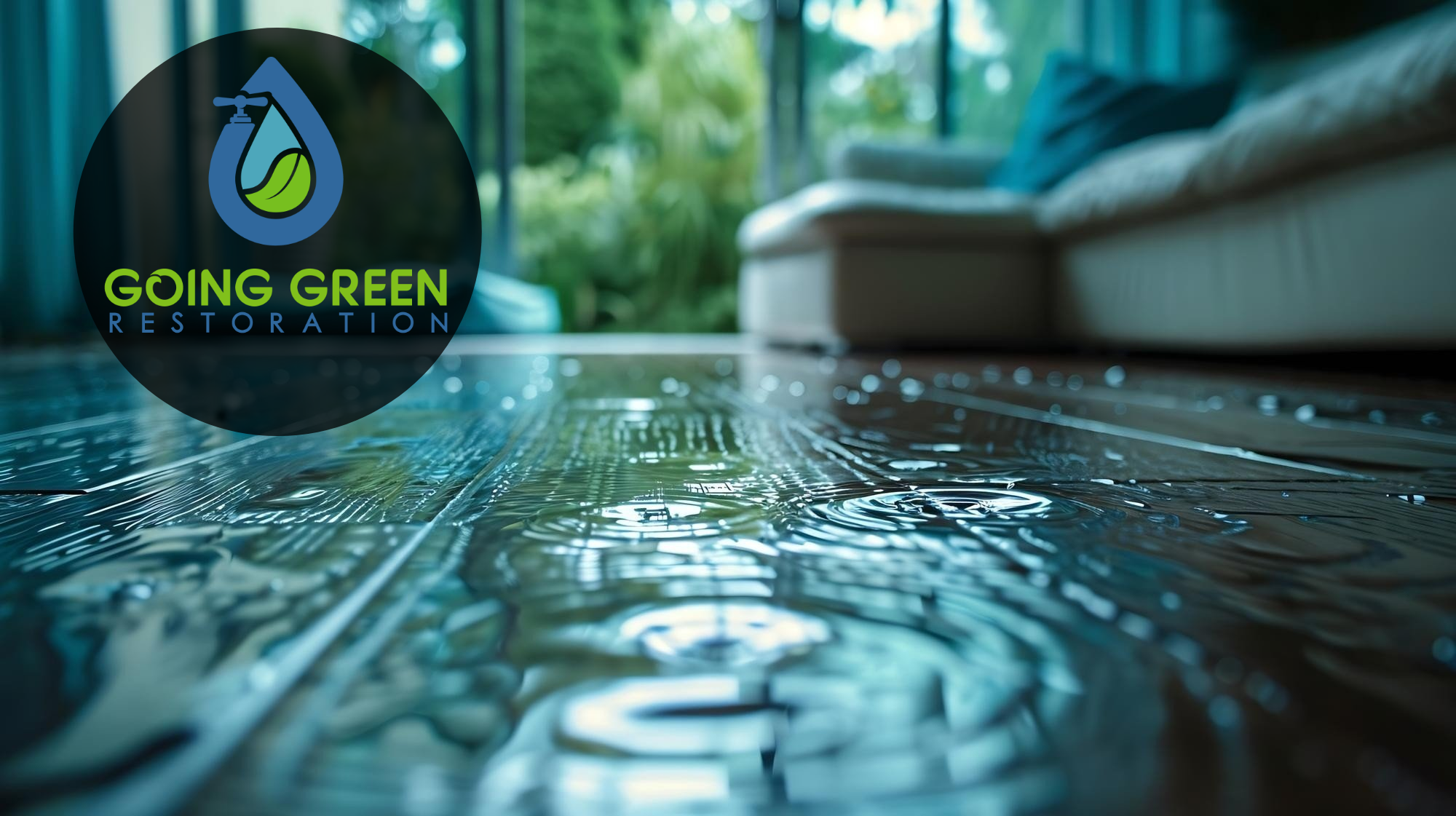
Neglecting minor roof issues can turn a manageable repair into a full-blown emergency. Addressing roof issues quickly helps prevent the need for full Orlando Flood Damage Repair later, especially when severe storms or hurricanes hit. Proactive maintenance including annual professional inspections, prompt replacement of damaged shingles, and resealing of flashing around vents and chimneys can save thousands in repair costs and extend the life of the roof.
In high-risk regions like Florida, it’s also wise to invest in hurricane-rated roofing materials and ensure proper attic ventilation to reduce heat buildup and moisture retention. By combining preventative care with timely repairs, homeowners can significantly lower the likelihood of water intrusion and protect the long-term value of their property.
Plumbing Failures and Hidden Leaks
A burst pipe or slow leak can be just as destructive as a flood, often causing significant water damage before the problem is even detected. In older Orlando neighborhoods, aging pipes, particularly those made from galvanized steel or polybutylene are more prone to corrosion, mineral buildup, and sudden failure. As these materials deteriorate, they can develop weak points that eventually rupture under water pressure. Even newer homes face risks from appliance malfunctions, faulty water heaters, and improperly installed plumbing fixtures.
Small leaks can be deceptively dangerous. A pinhole drip behind a wall or under a sink may go unnoticed for weeks or months, allowing moisture to saturate drywall, insulation, and wooden framing. This trapped moisture not only compromises structural integrity but also creates an ideal breeding ground for mold and bacteria.
Plumbing-related damage can cause:
- Warped flooring, as water seeps beneath tile, hardwood, or laminate, causing buckling and detachment.
- Wall and ceiling damage, where stains, bubbling paint, and sagging drywall indicate prolonged exposure to moisture.
- Structural instability, especially if leaks persist long enough to weaken load-bearing beams or joists.
When emergencies strike, 24/7 Emergency Restoration Orlando services are essential for minimizing property loss and preventing mold growth. Rapid water extraction, targeted drying, and professional moisture detection tools can mean the difference between a manageable repair and a full-scale renovation. Homeowners are encouraged to schedule regular plumbing inspections, replace outdated piping, and install leak detection systems that automatically shut off water when irregular flow is detected.
By addressing plumbing vulnerabilities before they escalate, Orlando residents can protect their homes from the costly and disruptive effects of hidden water damage.
Mold Growth After Water Exposure
Mold is a secondary risk that follows nearly all untreated water damage, and in Florida, this threat is amplified by the state’s consistently warm and humid climate. Even small, seemingly insignificant leaks can trigger mold growth if moisture is not fully removed. Once spores are present, they can begin colonizing damp surfaces within 24–48 hours, spreading rapidly through porous building materials like drywall, carpeting, and insulation.
Beyond the visible black or green patches that may appear on walls or ceilings, mold often thrives in hidden spaces behind baseboards, inside HVAC ducts, and under flooring making it difficult for homeowners to detect the full extent of contamination without professional assessment.
For homeowners facing mold issues, services like Mold Removal Orlando and Orlando Residential Mold Remediation provide targeted solutions designed to eliminate the problem at its source. Certified technicians use HEPA filtration systems to capture airborne spores, apply antimicrobial treatments to inhibit regrowth, and follow industry-standard removal techniques to restore healthy indoor air quality. These measures not only address visible mold but also target microscopic spores that can remain suspended in the air long after the initial cleanup.
The CDC (source) emphasizes that mold should be addressed promptly to reduce health risks, especially for individuals with asthma, allergies, or compromised immune systems. Prolonged exposure to mold can lead to respiratory irritation, chronic coughing, skin rashes, and, in severe cases, long-term lung conditions.
In Florida’s climate, prevention is just as important as remediation. This means acting quickly after water damage to dry affected areas completely, using dehumidifiers to maintain indoor humidity below 50%, and scheduling regular inspections for high-risk zones such as attics, basements, and bathrooms.
Flooding from Rising Groundwater Levels
Beyond storms, Florida faces the growing issue of high groundwater tables, a challenge that is becoming more severe as climate patterns shift and sea levels rise. In many parts of the state, the water table already sits just a few feet below the surface, meaning that heavy rain or prolonged wet seasons can quickly saturate the soil. When this happens, water can infiltrate through cracks in foundations, basement walls, and slab floors, often without any visible flooding at the surface.
This type of flooding is particularly insidious because it can cause long-term structural damage even without dramatic weather events. Persistent moisture weakens concrete, rusts steel reinforcement, and erodes soil around the foundation, potentially compromising the stability of the entire structure. In coastal and low-lying areas, saltwater intrusion can also occur, accelerating the deterioration of building materials and corroding plumbing and electrical systems.
Professional Orlando Water Clean Up & Restoration teams are equipped to address these complex scenarios. They can pump out standing water, use industrial-grade dehumidifiers to dry affected areas, and apply moisture barriers or waterproof coatings to protect against future infiltration. In addition, these experts often recommend exterior drainage improvements, sump pump installations, and grading adjustments to redirect water away from vulnerable structures.
For Florida property owners, recognizing the signs of groundwater intrusion such as unexplained dampness in lower levels, a persistent musty odor, or efflorescence (white mineral deposits) on basement walls is essential for early intervention. Ignoring these symptoms can result in escalating repair costs, mold growth, and, in extreme cases, foundation failure. Proactive measures and prompt professional response remain the best defense against the hidden dangers of rising groundwater levels
Coastal Erosion and Property Risk
For properties near Florida’s coastlines, erosion is more than just a beachside concern; it can directly compromise foundations, destabilize seawalls, and increase the risk of flooding during storm events. The constant action of waves, tides, and storm surges removes sand and soil from beneath structures, weakening their support over time. In some cases, entire sections of land can be lost in a single hurricane season, putting homes, businesses, and infrastructure at immediate risk.
While not every Orlando home is on the waterfront, the effects of coastal storms can travel far inland. Heavy stormwater runoff generated by these events can overwhelm municipal drainage systems, sending floodwaters into neighborhoods miles from the beach. This inland flooding often catches property owners off guard, as they may not consider themselves “at risk” simply because they are away from the shore.
The long-term impacts of coastal erosion extend beyond visible land loss. Increased sediment in waterways can clog drainage channels, reduce the effectiveness of stormwater systems, and contribute to higher flood levels during peak rainfall. Additionally, saltwater carried inland by storm surges can corrode concrete, steel, and aluminum components of buildings, leading to structural damage even without direct wave impact.
To mitigate these risks, experts recommend a combination of shoreline stabilization projects, improved stormwater management, and property-level flood defenses. Homeowners should also stay informed about changing coastal conditions and invest in regular inspections to detect early signs of foundation shifting or erosion-related damage. Proactive planning can mean the difference between a manageable repair and catastrophic loss when the next major storm hits Florida.
Appliance and HVAC Failures
Washing machines, dishwashers, and air conditioning units are all potential water damage culprits, often catching homeowners by surprise. In Florida’s humid climate, HVAC systems work nearly year-round, producing significant condensation that must be properly drained. When condensate drain lines clog due to algae growth, debris, or mineral buildup, water can overflow into attics, walls, or flooring, causing widespread damage before the problem is even detected.
Similarly, burst hoses on washing machines or faulty seals on dishwashers can release hundreds of gallons of water in a short period, flooding kitchens, laundry rooms, and adjacent areas. Refrigerator ice maker lines and water filtration systems also pose hidden risks, as slow leaks behind appliances can go unnoticed until they cause warped flooring, mold growth, or electrical hazards.
Immediate Water Damage Repair Orlando is critical when these failures occur. Rapid action can prevent secondary damage such as swelling of wood cabinetry, corrosion of electrical components, and the spread of mold spores into the air. Professional restoration teams use moisture detection tools to locate hidden water, industrial dehumidifiers to fully dry affected spaces, and antimicrobial treatments to ensure safe, healthy indoor conditions.
Preventative maintenance is key to avoiding these incidents. This includes replacing washing machine hoses every 3–5 years, cleaning HVAC condensate drain lines annually, checking appliance seals for wear, and ensuring proper installation of all water-fed devices. By addressing potential vulnerabilities early, homeowners can significantly reduce the risk of sudden appliance-related flooding and the costly repairs that follow.
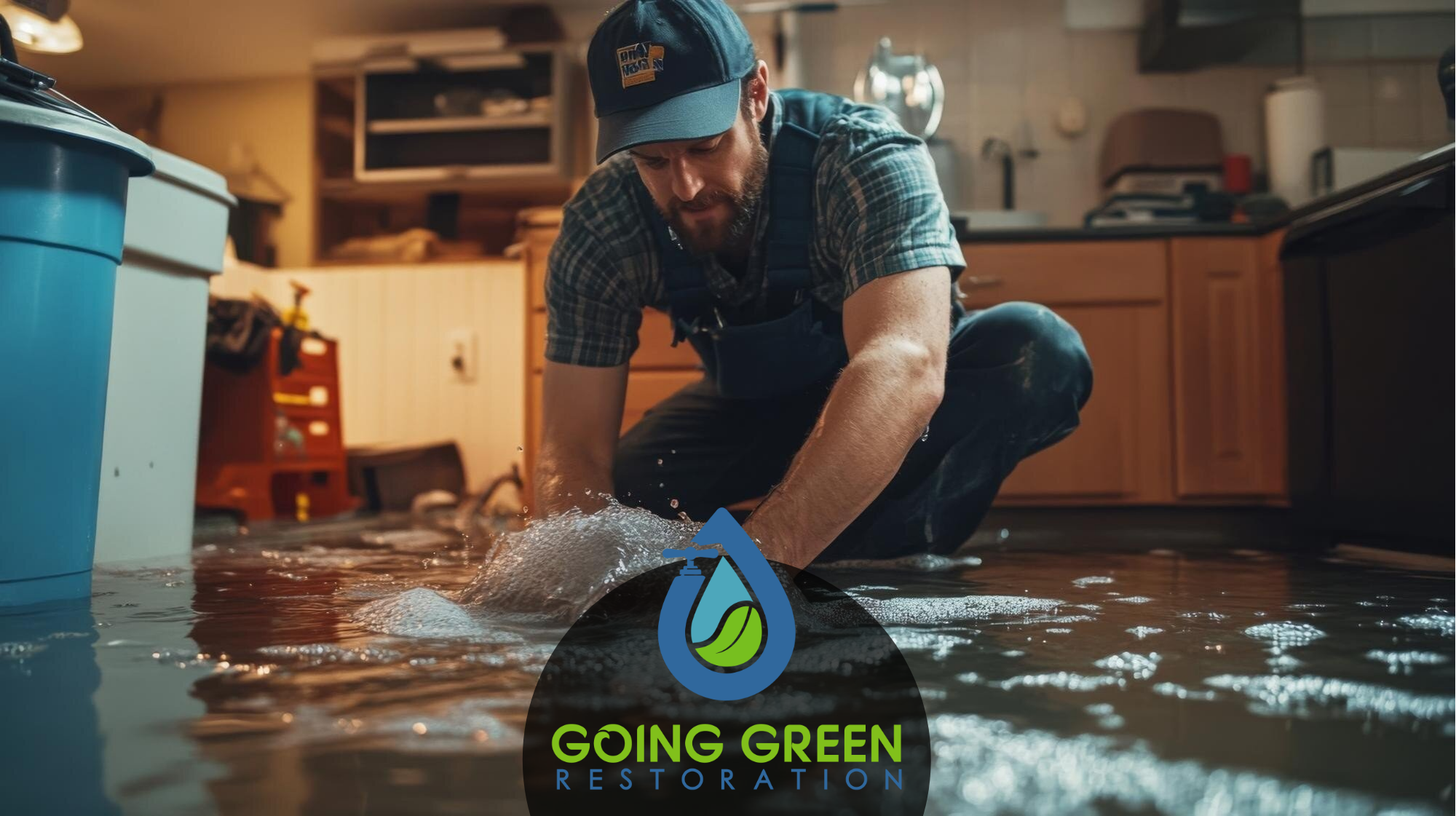
Sewer and Drain Backups
Sewer and drain backups are among the most hazardous types of water damage a homeowner can face. Caused by heavy rain, municipal system overloads, or blockages in the main sewer line, these events can introduce harmful contaminants including bacteria, viruses, and chemical residues directly into living spaces. Even small-scale backups can render areas of a home unsafe to occupy until proper remediation is completed.
Unlike clean water leaks, sewer backups fall under Category 3 water damage (also known as “black water”) according to industry standards. This classification means that direct contact with the water, or even inhalation of air in affected areas, can pose serious health risks. Common sources include tree root intrusions into pipes, grease buildup, collapsed sewer lines, and overwhelmed storm drains during intense Florida rain events.
Because of the health hazards involved, these situations require specialized cleanup protocols to ensure safety. All contaminated materials including carpeting, drywall, and insulation must be removed and disposed of properly. Surfaces are then disinfected with EPA-approved antimicrobial solutions, and air filtration systems equipped with HEPA filters are used to capture airborne pathogens during cleanup.
When faced with contamination, Orlando Emergency Mold Remediation services are often part of the recovery process, ensuring complete sanitation and preventing secondary mold growth. This step is especially critical in Florida’s humid climate, where mold can begin to spread within 24–48 hours if moisture is not fully eliminated.
Homeowners can reduce their risk of sewer and drain backups by scheduling regular plumbing inspections, installing backflow prevention devices, and avoiding the disposal of grease, wipes, or other clog-forming materials down household drains. In high-risk flood zones, sealing foundation cracks and elevating key utilities can also help minimize damage if backups occur.
Why Professional Help Matters
While DIY cleanup might seem tempting, improper handling of water damage can create long-lasting problems that remain hidden until they become far more expensive to fix. Water often seeps into wall cavities, subflooring, and insulation, where it cannot be reached with basic household equipment. Without complete extraction and drying, these areas remain damp, allowing structural materials to weaken and mold spores to multiply unnoticed.
Certified technicians at an Orlando Restoration Company follow IICRC (Institute of Inspection, Cleaning and Restoration Certification) standards, which are recognized across the industry for ensuring safe and thorough restoration practices. This includes advanced moisture mapping using infrared cameras, targeted structural drying with high-capacity dehumidifiers, and air purification to remove contaminants from the indoor environment. Professionals also document every step of the process, which can be essential for insurance claims and proof of proper remediation.
The EPA (source) warns that incomplete water damage repair can lead to recurring mold infestations, compromised indoor air quality, and even structural failure over time. In addition, improper cleanup can spread contamination, especially in cases involving Category 2 or Category 3 water damage. These risks make professional intervention not just advisable, but often necessary to ensure both safety and compliance with industry best practices.
In Florida’s humid climate, the margin for error is small delays of even 24–48 hours can mean the difference between a simple dry-out and a full-scale mold remediation project. By relying on trained experts, homeowners can be confident that every trace of excess moisture is eliminated, structural integrity is preserved, and the property is restored to a safe, habitable condition.
Reducing Risks in 2025: Prevention Tips for Florida Homeowners
In Florida’s evolving climate, where heavy rainfall, high humidity, and seasonal storms are becoming more frequent and intense, prevention is the most effective form of protection. Homeowners who take proactive measures can significantly reduce their exposure to costly water damage and the disruptions that follow.
Proactive measures include:
- Scheduling annual roof inspections to identify and repair vulnerabilities before they turn into leaks during storm season. Professional inspections can catch issues like worn shingles, damaged flashing, and deteriorating sealants that are often missed in visual checks from the ground.
- Installing water leak detection devices that provide early alerts via smartphone when moisture is detected in high-risk areas such as laundry rooms, kitchens, and around water heaters.
- Cleaning gutters and downspouts before storm season to ensure proper drainage and prevent water from pooling near the foundation. In Florida’s subtropical climate, clogged gutters can lead to rapid water overflow and foundation damage.
- Maintaining proper grading around the home so that rainwater flows away from, rather than toward, the structure. This reduces the risk of basement or slab infiltration, especially during prolonged rain events.
- Having a relationship with a trusted restoration company before an emergency so that immediate help is just a phone call away when disaster strikes.
When damage does occur, immediate action such as calling 24 Hour Mold Removal Services Orlando can make the difference between a quick recovery and long-term headaches. Prompt professional intervention helps minimize repair costs, prevent secondary mold growth, and restore safe living conditions as quickly as possible.
Florida homeowners in 2025 face an environment where weather extremes, aging infrastructure, and increased development all heighten the risk of water damage. By combining preventative maintenance with rapid emergency response, property owners can safeguard both their investments and their peace of mind.
Final Takeaway
In 2025, Florida homeowners face evolving water damage risks, but with the right preparation and professional help, these challenges can be managed. From Orlando Water Damage Restoration to mold remediation, certified experts provide the speed, skill, and care needed to protect property and health.

